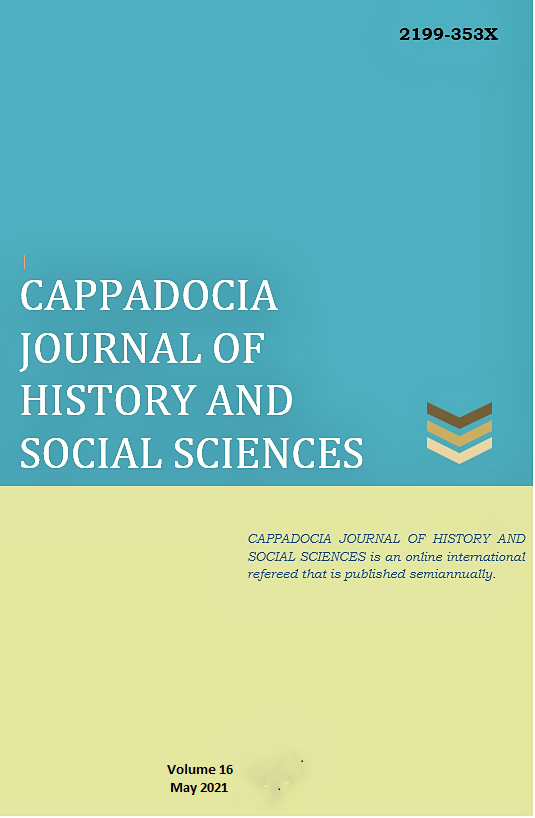Author :
Abstract
Kur’ân-ı Kerim’in kendine özel bir dil üslubu vardır. Kureyş lehçesiyle nazil olmasına rağmen kendi bünyesinde başka lehçelerden kelimelere de yer verir. Yine kendisini “Kur’ânen arabiyyen/Arapça bir Kur’ân” olarak tavsif ettiği halde onda İbranice, Rumca, Farsça, Süryanice, Habeşçe, Berberice, Nebatice sözcükler de bulunur. Âyetlerinin neredeyse tamamı Arap dili gramerine uygun cümlelerden oluşur buna mukabil ilk bakışta gramere muhalif gibi duran ve üzerinde gramer açısından özel bir araştırma yapmayı gerektiren cümleleri de vardır. Arapçanın bir yazı diline dönüştürülmesinin temel nedeni, Arap olmayan milletlerin İslam’ı kabul etmesiyle birlikte dilde meydana gelen elhân-ı luğaviyyeden/dil hatalarından Kur’ân’ı korumaktır. Korunması istenen Kur’ân, aynı zamanda bu yazı dilinin gramerini oluşturmada âlimler için ana kaynak olmuştur. Ancak gramere kaynaklık etmesine rağmen Kur’ân’ın bazı cümlelerinde öyle bir nahiv yapısı vardır ki bu yapı cümlelerinin doğru anlaşılmasında çeşitli işkâllere neden olur. Zamirlerin merciini tespit edememe, i’tirâzî cümlelerin nerede başlayıp nerede bittiğini belirleyememe, cümle öğelerinin birbirleri üzerindeki amellerini doğru tespit etmeyi zorlaştıracak iştigâl yapıları, hasr-ı kasr ifade eden istisna kalıplarının kullanılması nedeniyle cümlelerin yanlış anlaşılabilmesi, âyetlerde yer alan bazı kelimelerin aynı anda bedel, hâl ya da atf-ı beyân olabilecek şekilde getirilmesi nedeniyle türünün tespitine yönelik zorluklar, bazı fiillerin mef’ullerinin kendisiyle mef’ulün arasına bir başka fiil girdikten sonra verilmesi, özel işlevi bulunan bazı harflerin tür tespitinde yaşanan sıkıntılar vb. durumlar, söz konusu âyetlerin anlaşılmasını zorlaştırmakta, doğru anlama adına ek çalışmalar yapmayı gerektirmektedir. Bu bağlamda Kur’ân nahvinin neden olduğu işkâl türlerinden biri de cümlede hâlin ya da zi’l-hâlin doğru tespit edilememesinden kaynaklanan işkâllerdir. Bu çalışmada hâlin ya da zi’l-hâlin doğru tespit edilememesinden neşet eden işkâl için bazı örnekler sunulduktan sonra söz konusu işkâlin ortadan kaldırılmasına yönelik alternatif çözüm yolları belirlenecektir.
Keywords
Abstract
The Qur’an has its peculiar language style. Even though it was revealed with the Quraysh dialect, it also includes words from other dialects within itself. While the Qur’an describes itself as Kur’ânen arabiyyen/Arabic Qur’an, it also contains Hebrew, Greek, Persian, Syriac, Abyssinian, Berber, and Nabataean words. Almost all of the verses consist of sentences that are in accordance with the grammar of the Arabic language but there are also some sentences that seem to be contrary to grammar at first glance and this situation requires special research in terms of grammar. The main reason for the conversion of Arabic into written language is to protect the Qur’an from elhân-ı luğaviyye/language errors that occur with the acceptance of Islam by other nations. The Qur’an, which is intended to be protected has also been the main source for scholars to create the grammar of this written language. However, despite being the source for grammar, some sentences of the Qur’an have such a grammar structure that causes some difficulties in understanding the sentences correctly. The inability to determine the reference of pronouns, where intermediate sentences begin and end, sentence structures that make it difficult to determine the actions of sentence elements on each other, misunderstanding of sentences due to the usage of exception patterns that express hasr-ı kasr, difficulties in identifying the type of some words in the verses due to their introduction simultaneously as bedel, hâl or atf-ı beyân, giving the objectives (mef’ul) of some verbs after another verb is inserted between the verb and objective, problems in determining the type of some letters with special functions and such situations make it difficult to understand the verses in question and require additional studies for correct understanding. In this context, one of the types of difficulties caused by the Qur’anic grammar is the inability of determining hal or dhi’l-hâl in the sentence correctly. In this study, after presenting some examples for the difficulty caused by the inability of determining hal or dhi’l-hâl correctly, alternative solutions will be determined for eliminating this difficulty in question.
Keywords
- Agitoğlu, Nurullah. “Kutsal Metinlerde ve Hadislerde Hz. Âdem – Tespit ve Değerlendirme”, JASSS 26 (2014), 269-287.
- Kur’an’ın Lehçe Haritası Üzerine Bir inceleme I”, Nüsha Dergisi 6 (2002), 77-
- Kur’an’ın Lehçe Haritası Üzerine Bir İnceleme II”, Nüsha Dergisi 7 (2002), 121-
- İbn Hişâm, Ebu Muhammed Cemâluddîn. Muğni’l-lebîb an kutubi’l-eârîb, thk. Mâzin el-Mübârek, Şam: Dâru’l-Fikr, 1985.
- Namlı, Abdullah. Kader İnancının Temelleri, İstanbul: Rağbet Yayınları, 2019.
- Yaşar, Yahya. Kur’an’ın Bütünlüğü Bağlamında Kur’an Kıssalarında Peygamberlerin İsmeti, Ankara: Fecr Yayınları, 2020.





